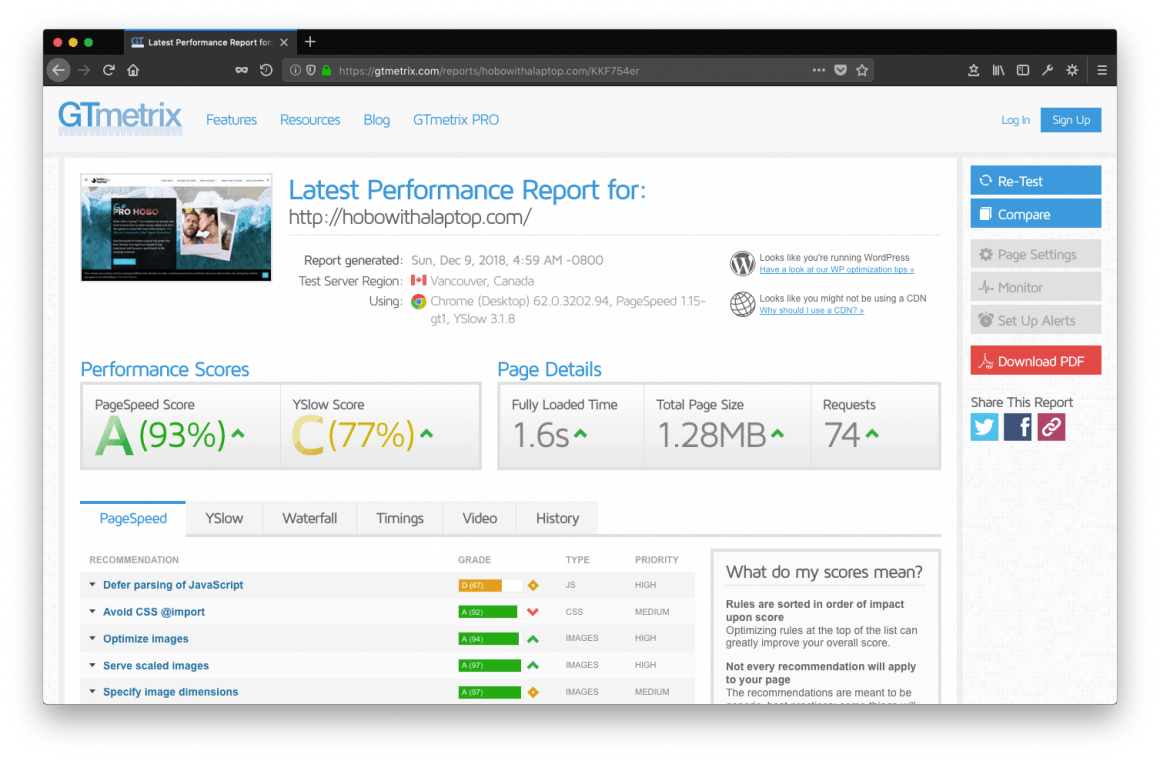

Learn about different keyword types and how to position them on a page to improve Google search ranking, website traffic, and conversions with this short keyword placement SEO guide.
This is probably the most important “learn blogging” post on Hobo with a Laptop; when I started out, I glazed over keyword placement and I lost years of my life I will never get back.
First we’ll explain some keyword basics in plain English, and then we’ll wrap it up with an easy to understand keyword placement guide.

How to Choose the Best Keywords for SEO
Keyword placement is incredibly important. They direct organic search traffic to our content, and help us weed out people who were never going to buy from our blog, anyway.
And I’m not just talking about Google, all internet marketplaces have a search function. That opens this keyword placement guide to YouTube, Linked In, Upwork, Amazon, and even online forums or Facebook Groups.
If you’re not using keywords correctly, you could be attracting the wrong type of website visitors with your current search rank and choice of keywords. The kind that never make a purchase, pick up a phone, or waste your time. And that’s a lot of lost opportunities.
In this blog post, let’s take a look at proper keyword placement with a slant towards affiliate marketing.
Keyword Competition
There’s a lot of free tools out there that will help you figure out what keywords get the most traffic, but none of them will tell you if you have a shot at ranking for them.
If you don’t know who you’re competing with and what their metrics are, how do you know if your own metrics are good enough to compete for the top spot on a search results page?
Keywords and keyword placement are one thing, but keyword competition boils down to sentence structure, semantics and synonyms.
A small tweak in how you string together your keywords could give you the edge you need to dodge your much bigger competitor.
Let’s say Acme Toy Co. is all over “fuzzy bunny” and totally ignores “bunny that is fuzzy”. If you knew that, you’d go for “bunny that is fuzzy” instead, because there’s less competition and it’s basically the same thing.
Identifying keywords that your biggest competitors are not using could give you the edge you need to rank quickly and win that top spot on Google.
We use Keysearch to discover the best keywords with lower competition for pages we really want to appear close to the top of search results.
Keyword competition is a really, really big deal and we explain why Keysearch is an absolute must if you’re going to rank on anything in this guide.

Keyword Segments
Thoughtful keyword selection is important and so is how you organize them within your website as a whole, not just on a single page.
Advanced keyword groups help to uncover trends; which rank best, which are more likely to convert, or who, why, what, where and when (where in the buyer’s journey) your customer is.
For instance, grouping keywords by stages in a buyer’s journey will help you identify at which stage you’re most likely to get a conversion. Is your best customer a beginner or are they experienced?
At the beginning of a buyer’s journey, they’re often unaware of the solution you provide and instead they’ll search for symptoms. Entire posts could be written about symptoms and convert really well.
Grouping keywords by brand or people will show you which perform best. CNN proves this by putting Trump into everything they publish because its so attractive to Liberals.
Grouping keywords by location will help you figure out where your highest converting customers are. Even spellings of words that vary by geography can help.
Canadian English has more vowels than American English, Mexico and Spain speak different flavors of Spanish and have different slang, and what Quebec did with French is so far removed from France it’s practically another language altogether –tabernac!
Other examples of keyword groupings; industry, application, problems, season, color preference, education, political leaning, position within a company, and so on.
Keyword segmentation is all about what works for you, and how you segment them depends on your unique goals. There’s no one size fits all keyword segmentation routine.
Keyword segments should always be considered before anything is created or published, and that goes for bloggers, too. It’s also an important reason why marketing departments should take cues from their SEO team first, and not the other way around.

Keyword Types
Keywords and keyphrases are the words used to find your offer; the actual words typed into the Google search box. And they aren’t technical, they’re actually quite human.
Keywords aren’t a technical area, like computer programming –someone who understands consumer psychology would likely be better at deciphering which are best for you.
Long Tail and Short Tail (Head Term) Keywords
A “short tail” keyword is usually 1-2 words, and is more general than a “long tail” keyword.
Short tail keywords generally attract more traffic, however that traffic may be less likely to convert.
This is because they are too general, and open a wider net than long tail keywords.
Long tail keywords on the other hand are longer, and more precise.
This is because they reveal more of the user’s intention when they’re used.
Short tail example: “Minaal backpack”.
Long tail example: “buy grey Minaal backpack on Amazon”.
Branded Keywords
Google is placing more importance on the use of branding in online search, specifically on your blog’s home page.
In the past, new websites hoping to game Google algorithms would create “keyword domains” as their business or blog name.
If they were selling Rolex watches, they’d buy the URL domain buyrolextwatches.com with the hope that they’d rank first for those keywords.
Today, Google views those websites as lower quality, and favors branding in search results.
As you already know, a brand sets you apart from your competitors, and it’s important to leverage branding wherever possible.
Often you’re the only one who will have Google search ranking for your branded keyword, and it makes it easier to do so.
In less common cases, brand terms come in handy to compete, too.
Many businesses have done well providing “brand name” alternatives –for instance, this is common with affiliate websites and online advertising (ie. “iPhone” + “alternatives”).
Commonly Misspelled Words
When you’re reading a blog post on our blog or elsewhere you may come across a really silly looking typo and wonder how someone overlooked such a gaffe.
In reality, spelling mistakes on a website may be covert keyword placement. When you’re doing keyword research, it’s common to identify regularly misspelled words that have a fair amount of traffic and much less competition.
It’s up to you to decide if you’re willing to look careless in your writing for the sake of outmaneuvering your competition.
Informational Keywords and Commercial Intent
Informational keywords cater to people who want to learn more about a place or product before visiting or buying it. These are great for appealing to earlier stages of a buyer’s journey.
Commercial intent keywords are for those who are ready to buy.

Using these 2 types of keywords must be a reflection of your business objectives. Too many of one or the other can either attract the wrong customer, or come off as too much of a hard sell.
In our experience “brand keyword” followed by “review” work really well.
Keyword Placement Guide
As previously mentioned, we use Keysearch to discover the best keywords with lower competition on Hobo with a Laptop (and our other “money projects”).
We have had the most success ranking on Google with a keyword density of around 1% – 3%.
If you’d like to examine the keyword placement and density of existing content or content before you publish it, check out Internet Marketing Ninjas’ Keyword Density Analysis Tool.
In order to best leverage keywords, we suggest you insert your keywords into each page as follows:
- At the beginning of your H1 Title Tag
- Only use one H1 Tag per page
- Within an H2 or H3 Subtitle Tag
- Within the first 25 words of your page
- Minimum 3 to 4 times throughout your page
That wraps up this short Google search keyword placement guide. Share your thoughts or experiences in the comments, we’d love to hear from you.
If you found this post helpful, we know you’ll really like our guide to affiliate marketing for bloggers.


Check Out Our Free Blogging Course!
If you found this post helpful, check out the rest of our free blogging course.
You’ll learn how to start a blog from scratch, make passive income –and much, much more!
Learn BloggingRelated Infographic
We wrote a post about YouTube SEO and included the infographic below. For your viewing pleasure, we present SEO Wars: Google Awakens.

Smaller Images, Faster Loading Times, Higher Search Rank
Ideally, your WordPress blog will load in 2 seconds or less.
Page loading time is a massive priority –not only for Google Search optimization, but also for visitors who tend to click away when a page takes too long to load.

We use ShortPixel to shrink our images and it’s improved our search rankings dramatically. Stop putting off faster website loading times, it’s hurting your wallet. Check out ShortPixel.






6 comments
I always wonder what it is like. Some popular sites have too much of a keyword and others don’t have it at all. Other popular ones have almost no content, and others that are not searched for often have good extensive content.
In many situations, it’s a website backlink profile that help it reach those heights. Consider spending some time during the remainder of 2020 on writing guest posts published on other people’s blogs and see what you can do for your own profile. Hope that helps!
We’re Keysearch fans for all the reasons you listed here. We need to get a bit better at page speed and identifying where on the buying journey they are but all in all, using the above methods you recommend, I feel we’re making progress. Adding content upgrades to properly keyworded posts has made a big difference to growing our mailing list too.
Keysearch is life for a blogger. Love it. Cheaper than Moz and Ahrefs combined, and so powerful.
Keep going, and thanks for stopping by.
Helpful information if you really want to improve your blog!
Happy you found it helpful Tracy ?